A Sales Agreement is a vital legal document that outlines the terms and conditions of a transaction between a buyer and a seller. It defines the rights, obligations, and…
continue reading
7+ Sample Product Development Agreement
-
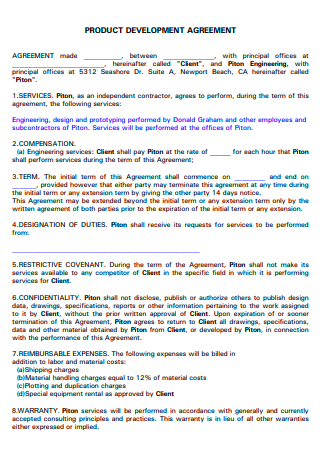
Product Development Agreement Template
download now -
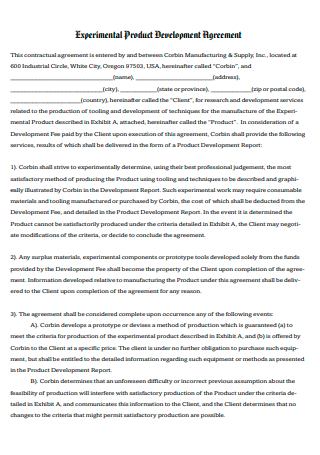
Experimental Product Development Agreement
download now -
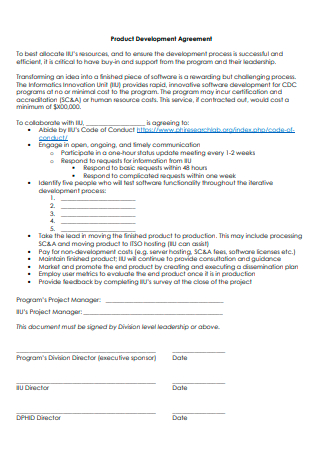
Product Development Agreement Example
download now -
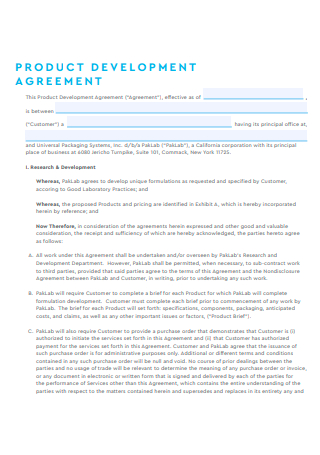
Product Development Agreement in PDF
download now -

Product Manufacturing Development Agreement
download now -
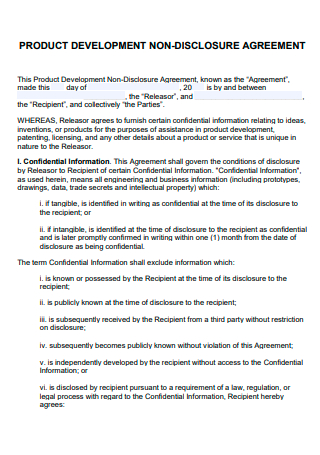
Product Development Non-Disclosure Agreement
download now -
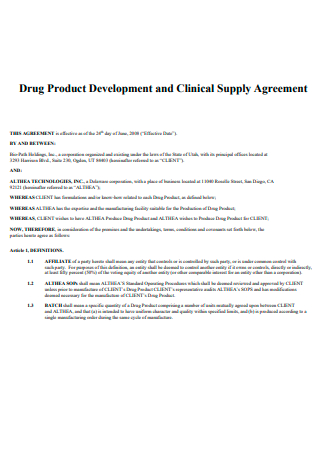
Drug Product Development and Clinical Supply Agreement
download now -
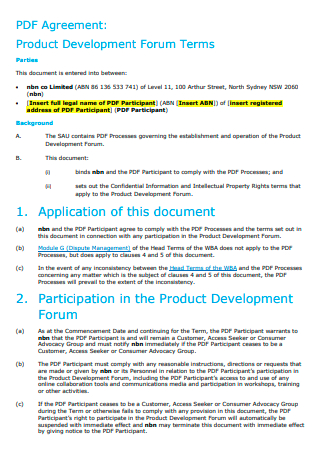
Product Development Forum Agreement
download now
What Is a Product Development Agreement?
A Product Development agreement protects you and your labor while also assisting you in obtaining the end product you desire. Furthermore, the agreement benefits the designer by addressing and resolving conflicts, as well as assisting you in receiving payment. If your agreement is correctly structured, it may define both parties’ legal responsibilities, outline both parties’ rights and obligations, and assist in enhancing communication by setting expectations. A product design and development agreement will come in handy in settling details with the client. Be sure to make use of our available product development agreement template to save you time rather than starting from scratch.
Categories of Product Development
Product development can be divided into two main categories. Knowing the two different categories are necessary to know which product is appropriate for your client’s planned product development. Be sure to know the difference between the two categories because it can give you an advantage over your competitors. Your clients will appreciate the knowledge you have which will let them see how prepared and adept you are at your Job.
How to Write a Product Development Agreement?
Now that you are more knowledgeable about what a Product development agreement is and the two main categories there are to product development, you are ready to proceed to make out your product development agreement. Clients will request this particular document in order to legally bind you as the provider and the client who will be receiving it. For sure, you will be busy handling other tasks in product development, so you may want to use a template to ease up your duties. Check out the provided product development agreement sample so you can use it as a reference in writing out your own product development agreement.
Step 1: State your Services
You can expound more on your Scope of Work. But it needs to be discussed prior to the client. If both parties have settled on an agreement but the client wishes to add an additional effort to the scope of work, there may be an additional fee necessary. Make sure to include that in writing as well so it can be considered as a paper trail. Explaining your scope of services will send a clear idea to the client of what you will be doing within the boundaries of their employment to develop their product.
Step 2: Include Confidentiality
As the provider, it is your responsibility to be conscious of the development of the products. This entails you are careful in how you handle the public release of these products. This step will require you to assure the client that you will not draw attention to the development of the product and instead be careful with the process. You can include in this section specific details that will be exchanged only between you and the client, without letting the news out to the public.
Step 3: Calculate the Payment
Since you and your client are discussing the development of products, it is most important to tabulate the compensation ahead of time. Be sure to include the materials, the labor, and effort, even the discounts and taxes as well. You can include the terms for the payment, such as when should it be due and how many days after you have delivered the product to the client should they pay you. Lastly, you can even add a late payment clause, increasing it by a certain percentage.
Step 4: Provide the Schedule
Every Company wants to maintain a professional relationship with its respective clients. In order to do so, try your best to come up with a precise or at least rough estimate of the schedule of the product development. You can prepare a rough draft prior to finalizing it in the product development. As long as the client is able to see how long it would take for them to receive the completed products. This goes for both the development schedule as well as the delivery schedule.
Step 5: Add a Terms and Conditions
This dictates that the provider would not be liable for delays in the delivery if natural disasters such as typhoons or earthquakes were to occur as it is beyond any one’s control. You can also include stating that the product development adhere’s to the laws of the city, state, or country you are living in. You should also state that the client agrees to indemnify and hold you as the provider harmless against any and all claims of loss or damage without limitation except in cases of willful misconduct or gross negligence.
Step 6: Acceptance
Be sure that both parties have thoroughly read and understood the fine print before signing the Important Business Document. This document then becomes a legally binding agreement that both must follow through with what the contents contain and have been stated. If there are indeed additional changes or instructions that were given by the client, make sure to get it in writing and have it also be signed by both parties to showcase the acknowledgment of its presence.
Different Types of Products
There are various products that the public purchase and consume for their respective reasons. Some may be applicable to you as a company that would develop specific products whereas some of the ones mentioned down below would not be applicable. Regardless, you would still need to know about them in order to at least get a slight idea or a grasp of the different types of products there are.
Phases in the Development of a New Product
Product development is a never-ending procedure. Every time you discover anything new about your consumer, their wants, or their workflow, you should take a step back and assess if your product still makes sense, and course-correct if necessary. As a result, your product development process does not come to a halt or follow a set of procedures. Before you can launch your product, you may need to go through several minor revisions.
FAQs
What does a development agreement do?
A development agreement is a voluntary contract between a local government and a person who owns or controls land within the jurisdiction that outlines both parties’ obligations as well as the criteria and circumstances that will regulate the development of the product.
What is a development agreement’s purpose?
A development agreement guarantees to the client that the project’s development restrictions will not change throughout the life of the agreement. This entails that both parties are protected from fallouts or disagreements from either party. Most especially regarding the budget for obtaining materials and the labor effort of the provider.
What function does product development play?
A product developer oversees the process of creating new goods or improving current ones in order to effectively fulfill client expectations. Research is conducted, suggestions are developed, and the design process is overseen by product developers.
Coming up with an agreement for product development will only be smooth if you have discussed and settled details with your client. As long as both parties have come to an agreement, the process of a contract would be easily written out. This is why it is vital to converse with the client beforehand finalizing the contents of the agreement in order to minimize changes and additional instructions. Although it is inevitable, it can be lessened. With that being said, you are more than well-equipped to create your own product development and marketing agreement. Think of this article as merely a product development agreement checklist to ensure you have everything covered.

